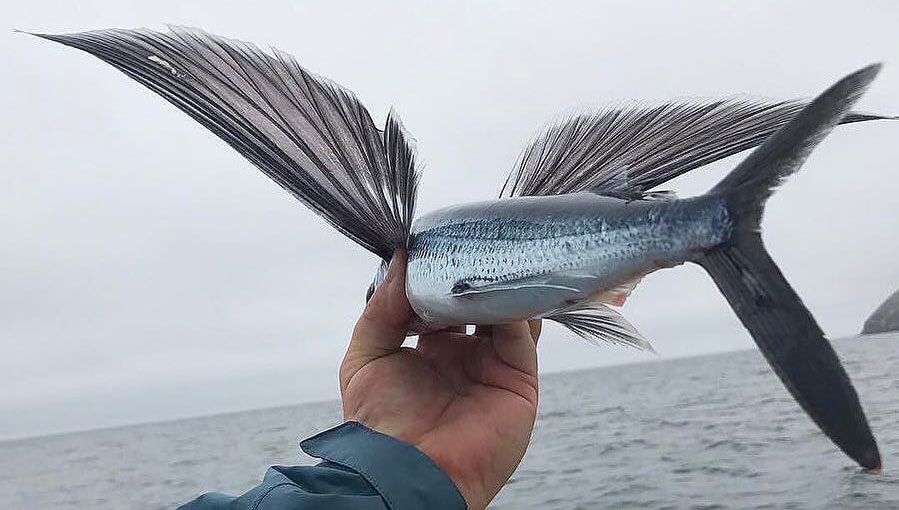The process of taking flight, or gliding, begins by gaining great velocity underwater, about 37 miles (60 kilometers) per hour. Angling upward, the four-winged flying fish breaks the surface and begins to taxi by rapidly beating its tail while it is still beneath the surface. It then takes to the air, sometimes reaching heights over 4 feet (1.2 meters) and gliding long distances, up to 655 feet (200 meters). Once it nears the surface again, it can flap its tail and taxi without fully returning to the water. Capable of continuing its flight in such a manner, flying fish have been recorded stretching out their flights with consecutive glides spanning distances up to 1,312 feet (400 meters). Photo: @dante_captain
#flyingfish #flying #fish #fishes #ocean #animals #amazing #nature #wildlife
More on Flying Fish from Wikipedia
The Exocoetidae are a family of marine fish in the order Beloniformes class Actinopterygii, known colloquially as flying fish. About 64 species are grouped in seven to nine genera. While they cannot fly in the same way as a bird does, flying fish can make powerful, self-propelled leaps out of water where their long wing-like fins enable gliding for considerable distances above the water’s surface. The Exocet missile is named after them, as variants are launched from underwater, and take a low trajectory, skimming the surface, before striking their prey.
The oldest known fossil of a flying or gliding fish, Potanichthys xingyiensis, dates back to the Middle Triassic, 235–242 million years ago. However, this fossil is not related to modern flying fish, which evolved independently about 66 million years ago.





















